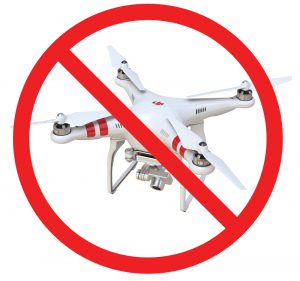 The exploding drone-mitigation (anti-drone) industry could top almost $2 billion within seven years, according to a new industry report.
The exploding drone-mitigation (anti-drone) industry could top almost $2 billion within seven years, according to a new industry report.
Grand View Research predicts the market will grow to $1.85 billion by 2024. As drone use grows, many public agencies and companies are seeking anti-drone solutions to stop drones from flying over restricted or unsafe locations such as wildfire zones, nuclear power plants, prisons and airports.
The potential for rogue-drone damage prompted the FAA to launch a new Cooperative Research and Development Agreement with Gryphon Sensors, Liteye Systems and Sensofusion earlier this year to deploy drone-sensor prototypes at select airports.
“The steep rise in the adoption of drones for commercial as well as recreational purposes has increased concerns regarding aerials attack and threats,” the report states. “Detection and identification of these unmanned aircraft systems have become a vital factor for the maintenance of the security.”
Anti-drone solutions typically deploy both detection and mitigation modules using video imaging, thermal imaging, acoustic-based sensor, radar-frequency emission and radar-based systems.
Examples include an anti-drone “rifle” by Batelle Innovations, an “anti-drone death ray” by Anti–AUV Defense System and the SkyWall100 system which resembles a missile launcher and can deploy an intelligent projectile with on-board countermeasures up to 100 meters.
Grand View’s report is even more optimistic than a 2016 study by India-based business-intelligence firm MarketsandMarkets, which pegged anti-drone growth at $1 billion dollars by 2022 with predicted compound annual growth rate of 23.89 percent across 2017-22. A free sample of the Grand View report is available here.
Counter-drone measures have drawn attention from both the commercial and military sectors as a viable method of defeating rogue drones.
- In September, the U.S. Navy tested a “virtual net” tasked with detecting and splashing hostile drones.
- The Defense Advanced Research Projects Agency’s Tactical Technology Office in August publicized a request for information to help create “novel, flexible, mobile layered” anti-drone solutions to defend “fixed and mobile ground and naval forces from possible drone threats.”
- Start-up firm OpenWorks Engineering won the recent Best UAS Interdiction Award at the Countering Unauthorized Unmanned Aircraft Systems Challenge in August. The company’s flagship product, SkyWall, stopped the most drones out of seven finalists.
Jason is a longstanding contributor to DroneLife with an avid interest in all things tech. He focuses on anti-drone technologies and the public safety sector; police, fire, and search and rescue.
Beginning his career as a journalist in 1996, Jason has since written and edited thousands of engaging news articles, blog posts, press releases and online content.
Email Jason
TWITTER:@JasonPReagan
Subscribe to DroneLife here.







As always, there are issues with abuse from both sides of the coin (pilots flying where they aren’t allowed to and anti-drone engagement when there shouldn’t be any). Will be interesting to see how this plays out.